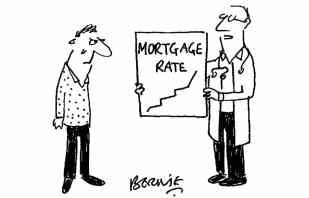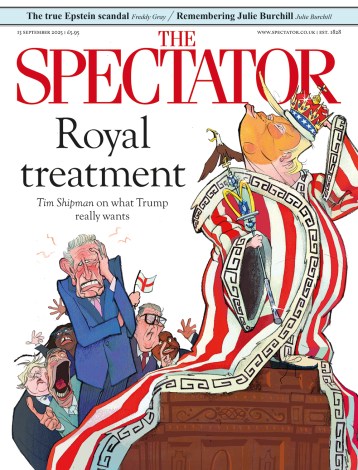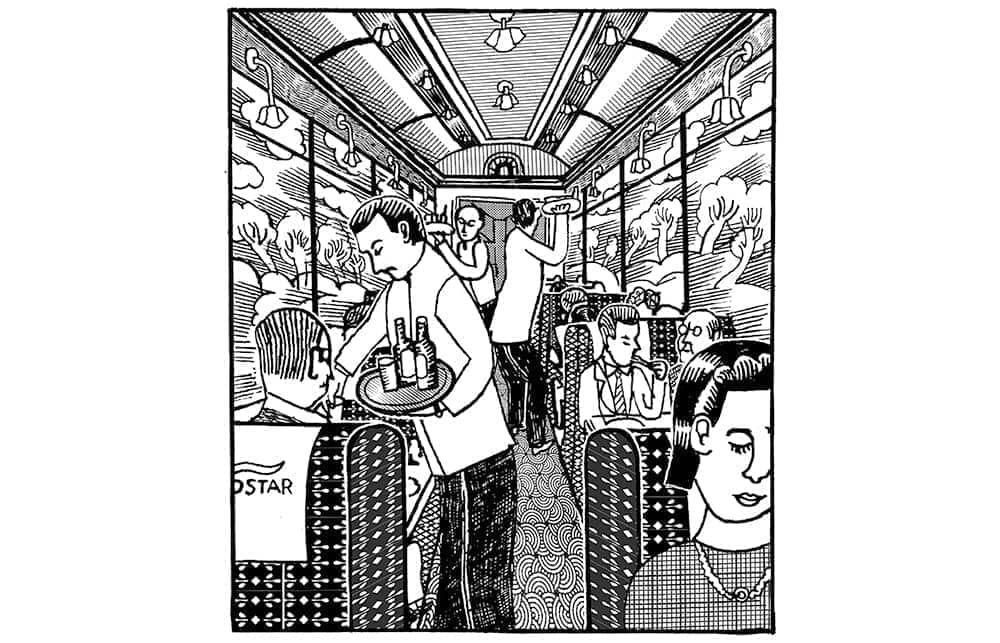Since I took the Golden Arrow to Paris and back in 1965, I have always thought of that train journey as one of the great joys of life. I cannot remember how many pre–tunnel trips to the City of Light I made, via Dover and Calais, Folkestone and Boulogne or (best of all) Newhaven and Dieppe.
My great regret is that I never took the old Night Ferry, a special set of blue and gold sleeping cars designed to run on both French and British railways, on which you could (in theory at least) slumber your way between the two capitals – though perhaps not while it was actually being shunted on and off the boat. Its slightly seedy glamour was much increased when the shifty former transport minister Ernest Marples fled the country aboard it in 1975 to avoid a huge tax bill, cramming his possessions into the guard’s van and leaving his Belgravia home in chaos.
Maybe it was the Golden Arrow that fixed in my mind the idea that the train to Paris was always an adventure and an occasion for delight. When I took it, it was the last departing trace of pre-1939 railway luxury. Every mile of the journey, the Calais customs shed, the ludicrously shrill whistles of the vast and muscular French steam locomotives, all the delicious meals served at our Pullman seats, remain in my memory. It was also the place where I discovered what coffee actually was, having grown up in a nation which thought coffee meant Nescafé and that unspeakable fluid that came out of bottles.

So why is travelling by Eurostar to Paris so grey and dreary? Isn’t it odd that this potentially marvellous service has never really become the commercial success it ought to be? Yet it also somehow manages to be as crowded and hard to book as it would be if it were a success. Here’s my suggestion to whoever is in charge.
First, why do they try to make it so much like travelling by air? This is exactly what most Eurostar passengers wish to avoid. I have sought in vain for an explanation for the tedious scanning of luggage and X-raying of passengers. It’s a train, for goodness sake. No hijacker is going to hammer on the door of the driver’s compartment and demand: ‘Turn this train round, we’re going to Damascus.’ As far as I can discover, no other trains which pass through long deep tunnels, beneath seas or mountains, impose such searches. I know the Spanish do a pretty cursory luggage check on all major trains, but that’s because of a particular horror that happened in Madrid. It has nothing to do with undersea tunnels.
The Golden Arrow fixed in my mind the idea that the train to Paris was always an adventure and a delight
Passport control is just great, especially now that the gendarmes have begun stamping British travel documents again, for the first time since 1972. I love the process of going through French immigration in London, and so entering what must be the oddest territorial exclave in Europe apart from Kaliningrad. But why isn’t it more French once you get to the other side? It is too much, I suppose, to ask for a replica of the Café Les Deux Magots at St Pancras, and I don’t want any accordion music, but surely we could do better than the banal mini-Heathrow in which passengers must wait for ‘boarding’. And that’s another thing. We didn’t have to wait in some windowless lounge to get on the Golden Arrow. We just turned up at Victoria, showed our tickets at the barrier, found our seats and climbed on to the train, just as if we were going to Edinburgh or Plymouth. Letting travellers do this in their own time would avoid the absurd crowd scenes when the train is finally announced, and give us time to sink into our seats without panic or sweat.
And then where is the dining car? Yes, I know that in Standard Premier a sort of meal is served. But again it is much more like airline food than it is like a railway dining car. People at the start of holidays or business trips are especially open to spasms of extravagance. And I mean a proper dining car, either the old British sort as featured in the film In Which We Serve, in which passengers subside into deep seats and are served Brown Windsor soup followed by delicious railway fish and then perhaps apple pie, or the gorgeous old SNCF type, perfumed with the scent of hot olive oil from the galley, with its crisp napery, heavy cutlery and the unopened bottle of St-Émilion left thoughtfully on the table, which only a fool would not be tempted to drink.
I’d pay. I’d do it on the way back too, as I so often did with my last few francs on the Calais train, or on the slow French boat to Newhaven with France slowly fading on the southern horizon, and a few hours left before I had to return to normality. In fact the delight of eating proper meals aboard trains might be re-established on the Paris run, and spread outwards – once more people realised just how wonderful it was. As Evelyn Waugh described it in Brideshead Revisited:
The knives and forks jingled on the tables as we sped through the darkness; the little circle of gin and vermouth in the glasses lengthened to oval, contracted again, with the sway of the carriage, touched the lip, lapped back again, never spilt; I was leaving the day behind me.
And so he was, and when I take the train to Paris or beyond, I am leaving the humdrum world behind me. Can’t it once again be a voyage, rather than a bureaucratic, joyless procedure best done under general anaesthetic?






Comments